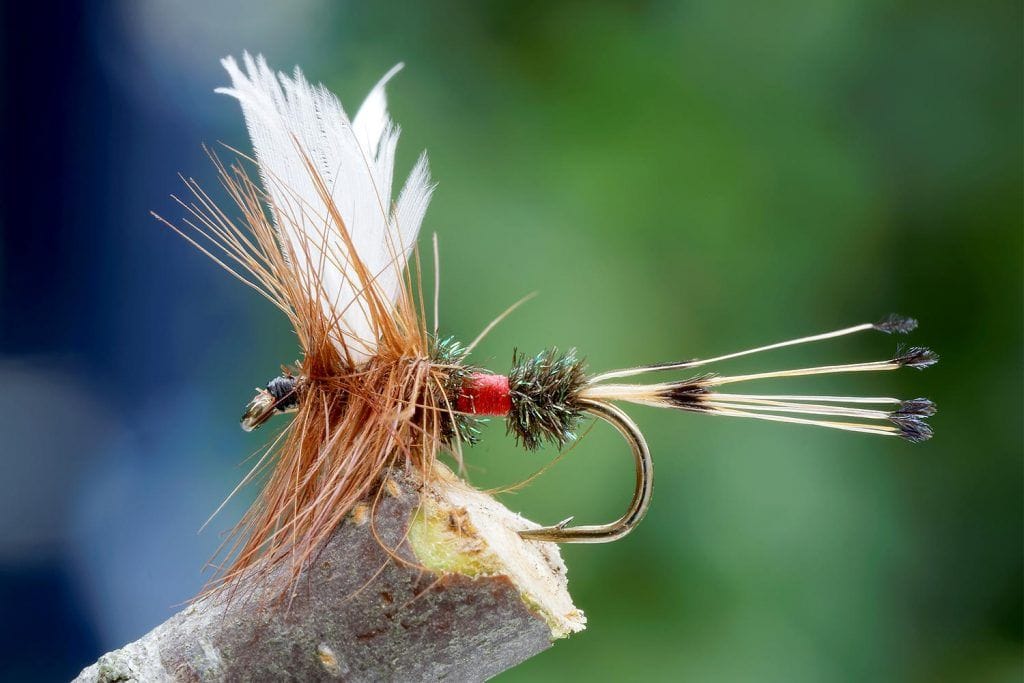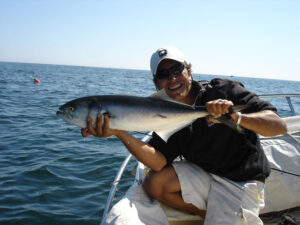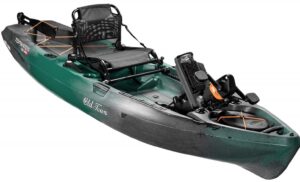If you’re an angler seeking an exciting and challenging fishing experience, trout fishing should be on your radar. Trout are not only prized for their delicious taste but also for their cunning nature. To successfully catch these elusive creatures, one must master the art of fly fishing. And at the heart of fly fishing lies the selection of the perfect trout fishing flies. In this comprehensive guide, we’ll explore the world of trout fishing flies, from their history and types to essential tips for using them effectively. So, grab your rod and let’s dive into the fascinating world of trout fishing!
The History of Trout Fishing Flies
Before we delve into the intricacies of trout fishing flies, let’s take a moment to appreciate their rich history. The art of fly fishing dates back centuries, with evidence of its existence found in ancient Chinese and Roman literature. However, it was not until the late 19th century that trout fishing flies as we know them today started to emerge.
Englishman George Selwyn Marryat is often credited as being one of the pioneers of modern trout fishing flies. In 1850, he published “The Fly-Fisher’s Entomology,” a groundbreaking work that detailed the various types of insects trout feed on, and the corresponding artificial flies that imitate them.
Since then, the art of creating trout fishing flies has evolved significantly. Today, fly tiers meticulously craft these delicate imitations, using a wide range of materials and techniques to fool even the most discerning trout.
The Different Types of Trout Fishing Flies
Trout fishing flies come in a bewildering array of shapes, sizes, and colors. Each type is designed to imitate a particular insect or baitfish, and knowing when and how to use them is crucial for success. Let’s explore some of the most popular trout fishing flies:
1. Dry Flies
Dry flies are designed to float on the water’s surface and imitate insects that trout feed on when they hatch from their aquatic homes. These flies are often made with lightweight materials like feathers, fur, and foam to ensure buoyancy. Popular dry flies include the Adams, Royal Wulff, and Elk Hair Caddis.
2. Wet Flies
Unlike dry flies, wet flies are designed to sink below the water’s surface. They imitate insects that have been dislodged and are drifting downstream, or emerging nymphs rising towards the surface. Wet flies can be fished at various depths, making them versatile options for different fishing conditions. Examples of wet flies include the Woolly Bugger, Soft Hackle, and Pheasant Tail Nymph.
3. Nymphs
Nymphs are a subcategory of wet flies that specifically imitate the immature forms of aquatic insects, commonly known as nymphs. These flies are often fished close to the riverbed, as that’s where nymphs spend most of their lives. Pheasant Tail Nymph, Hare’s Ear Nymph, and Prince Nymph are popular choices for trout anglers.
4. Streamers
Streamers are large, flashy flies that imitate baitfish or other aquatic creatures that trout prey upon. These flies are typically fished with an active retrieve, mimicking the movements of injured or fleeing prey. Streamers like Woolly Buggers, Clouser Minnows, and Sculpzillas are go-to options for anglers targeting larger trout.
Choosing the Right Trout Fishing Fly
With a plethora of trout fishing flies available, selecting the right one for the job can be overwhelming. However, a few key factors can help narrow down your options:
1. Observe the Water
Before selecting a fly, take a moment to observe the water and the insects present. Look for any signs of insect activity, such as hatching or swarming. By matching your fly to the insects trout are actively feeding on, you significantly increase your chances of success.
2. Consider the Season
Trout have different feeding preferences depending on the time of year. In the spring, they often feed on emerging insects and nymphs. Summer brings abundant insect hatches, while fall sees trout voraciously feeding in preparation for winter. Adjust your fly selection accordingly to match the prevailing feeding patterns.
3. Know the Local Flies
Every region has its own fly patterns that have proven effective over time. Research and seek local knowledge to identify the flies that consistently produce results in your target fishing area. Local fly shops, online forums, and experienced anglers can be great resources for this information.
4. Experiment
Trout can be notoriously fickle, and what works one day may not work the next. Don’t be afraid to experiment with different fly patterns, sizes, and colors until you find what the trout are responding to. Keep a diverse selection of flies in your tackle box to adapt to changing conditions.
Fly Fishing Techniques for Trout
Now that you have an understanding of the different types of trout fishing flies and how to choose the right one, let’s explore some essential fly fishing techniques:
1. Cast with Precision
Fly fishing requires precise casting to present your fly naturally and delicately. Practice your casting technique to ensure accurate placement of your fly, especially in tight spots or under overhanging vegetation where trout often lurk.
2. Mend Your Line
When fishing with wet flies or nymphs, it’s essential to mend your line to achieve a drag-free drift. Mending involves repositioning your line on the water’s surface to eliminate any unnatural movement that may spook the trout.
3. Master the Art of Drift
The key to success in fly fishing is the natural drift of your fly. Allow your fly to drift downstream naturally, mimicking the movement of real insects. Keep an eye on the line for any subtle twitches or pauses, indicating a potential strike.
4. Use Different Retrieves
When fishing with streamers, experiment with different retrieves to trigger a predatory response from trout. Vary your retrieve speed, depth, and pattern to find the presentation that entices a strike. Sometimes, a slow, erratic retrieve can be more effective than a steady one.
Common Myths and Misconceptions about Trout Fishing Flies
As with any sport, trout fishing comes with its fair share of myths and misconceptions. Let’s debunk some common misconceptions about trout fishing flies:
1. The Bigger, the Better
Contrary to popular belief, bigger is not always better when it comes to trout fishing flies. While larger streamers can entice larger trout, smaller flies often produce better results, especially when imitating smaller insects or during periods of selective feeding.
2. Only Fish Dry Flies on the Surface
While dry flies are undoubtedly exciting to fish, focusing solely on surface fishing can limit your success. Trout often feed below the surface, especially during early mornings, late evenings, or when specific insect hatches occur. Be open to fishing wet flies, nymphs, or streamers to increase your chances of landing a trophy trout.
3. Presentation Trumps Pattern
While presentation is crucial in fly fishing, pattern selection should not be overlooked. While a perfect presentation can tempt even the most skittish trout, using the wrong pattern can lead to frustration. Always strive for a balance between presentation and pattern selection to maximize your chances of success.
4. You Need a Vast Collection of Flies
While having a diverse selection of flies is advantageous, you don’t need a vast collection to be successful. Focus on a few proven patterns that imitate a variety of insects and baitfish. By understanding the basic principles of trout feeding behavior, you can make informed fly choices without being overwhelmed by an extensive fly collection.
Frequently Asked Questions
1. What is the best time of day to fish for trout?
The best time of day to fish for trout is typically early morning or late evening when the water is cooler, and trout are more active. However, trout can be caught throughout the day, especially during overcast or rainy conditions.
2. How do I know if a trout has taken my fly?
When a trout takes your fly, you may feel a subtle tug on the line or see a slight twitch in the line or indicator. Keep a close eye on your line and be ready to set the hook at the slightest indication of a strike.
3. Can I use trout fishing flies for other fish species?
While trout fishing flies are primarily designed for trout, they can be effective for a wide range of fish species. Many fish, including bass, panfish, and even saltwater species, feed on similar food sources that trout flies imitate.
4. How do I retrieve a streamer fly?
When retrieving a streamer fly, experiment with different retrieves to entice a strike.You can try a steady retrieve, where you simply strip in the line at a consistent speed. This can imitate a baitfish swimming steadily through the water. Another effective technique is to use a strip-pause retrieve. Strip in the line a few times, then pause for a moment before continuing the retrieve. This can mimic the movements of an injured or disoriented prey, often triggering a predatory response from trout.
5. What is the role of tippet in fly fishing?
Tippet is a thin, transparent line that is attached to the end of the fly line and serves as a connection between the fly and the angler. It is essential in fly fishing as it allows for a more natural presentation of the fly and provides a level of invisibility to the trout. Tippet also helps to absorb the shock of a trout’s sudden movements during a fight, reducing the risk of the line breaking.
In Conclusion
Trout fishing flies are not only tools to catch fish but also a testament to the angler’s artistry and understanding of nature. By selecting the right fly, mastering the essential techniques, and dispelling common myths, you can increase your chances of success in the captivating world of trout fishing.
Remember to observe the water, consider the season, and know the local patterns when choosing your flies. Practice your casting and presentation skills to ensure a natural drift, and be open to experimenting with different retrieves and techniques. With patience, persistence, and a touch of humor, you’ll be well on your way to landing that trophy trout.
Frequently Asked Questions
1. Can I use trout fishing flies in saltwater?
While trout fishing flies are primarily designed for freshwater trout, they can be effective in saltwater as well. Many saltwater species, such as bonefish and redfish, feed on small baitfish and crustaceans that trout flies can imitate. However, it’s important to choose flies that are specifically designed for saltwater conditions and are made with corrosion-resistant materials.
2. How do I choose the right fly size?
The size of the fly you choose depends on the insects or baitfish you’re trying to imitate and the feeding behavior of the trout. As a general rule, smaller flies are more effective when trout are feeding on smaller insects or during periods of selective feeding. Larger flies can be effective when imitating larger baitfish or when targeting larger trout. It’s always a good idea to carry a range of sizes in your fly box to adapt to different fishing conditions.
3. Do I need a special rod for trout fishing?
While it’s not necessary to have a dedicated trout fishing rod, choosing the right rod can greatly enhance your fishing experience. A medium-action or fast-action fly rod in the 4 to 6 weight range is a versatile choice for trout fishing. It provides enough backbone to cast larger flies and handle larger fish, while still offering the sensitivity needed for delicate presentations. Ultimately, choose a rod that feels comfortable in your hand and suits your fishing style.
4. How do I take care of my trout fishing flies?
Proper care and maintenance of your trout fishing flies are essential to ensure their longevity and effectiveness. After each fishing trip, take the time to dry your flies thoroughly to prevent them from becoming waterlogged and developing mold or rust. Use a fly drying patch or a desiccant powder to absorb moisture from the flies. It’s also a good idea to periodically inspect your flies for any damage, such as bent hooks or frayed materials, and replace or repair them as needed.
5. What is the best time of year for trout fishing?
The best time of year for trout fishing varies depending on the region and the specific species of trout. In general, spring and fall are considered prime seasons for trout fishing, as the water temperatures are cooler and the trout are more active. However, trout can be caught year-round, and each season offers its own unique fishing opportunities. It’s important to research the local fishing regulations and consult with experienced anglers or local fly shops to determine the best time to target trout in your area.
Summary
Trout fishing flies are an integral part of the art of fly fishing and play a crucial role in enticing and fooling the elusive trout. From dry flies to nymphs and streamers, the variety of flies available is vast, each designed to imitate a different insect or baitfish. By understanding the history, types, and selection criteria of trout fishing flies, anglers can increase their chances of success on the water.
Choosing the right fly involves observing the water, considering the season, knowing the local patterns, and being open to experimentation. Mastering essential fly fishing techniques such as casting with precision, mending the line, and perfecting the art of drift can greatly improve your chances of enticing strikes from trout. It’s important to dispel common myths and misconceptions about trout fishing flies, such as the notion that bigger flies are always better or that only dry flies should be used on the surface.
Trout fishing flies are not only tools for catching fish but also a source of artistic expression and appreciation for the wonders of nature. With the right knowledge, skills, and a touch of humor, anglers can embark on a rewarding journey in pursuit of the elusive trout.





